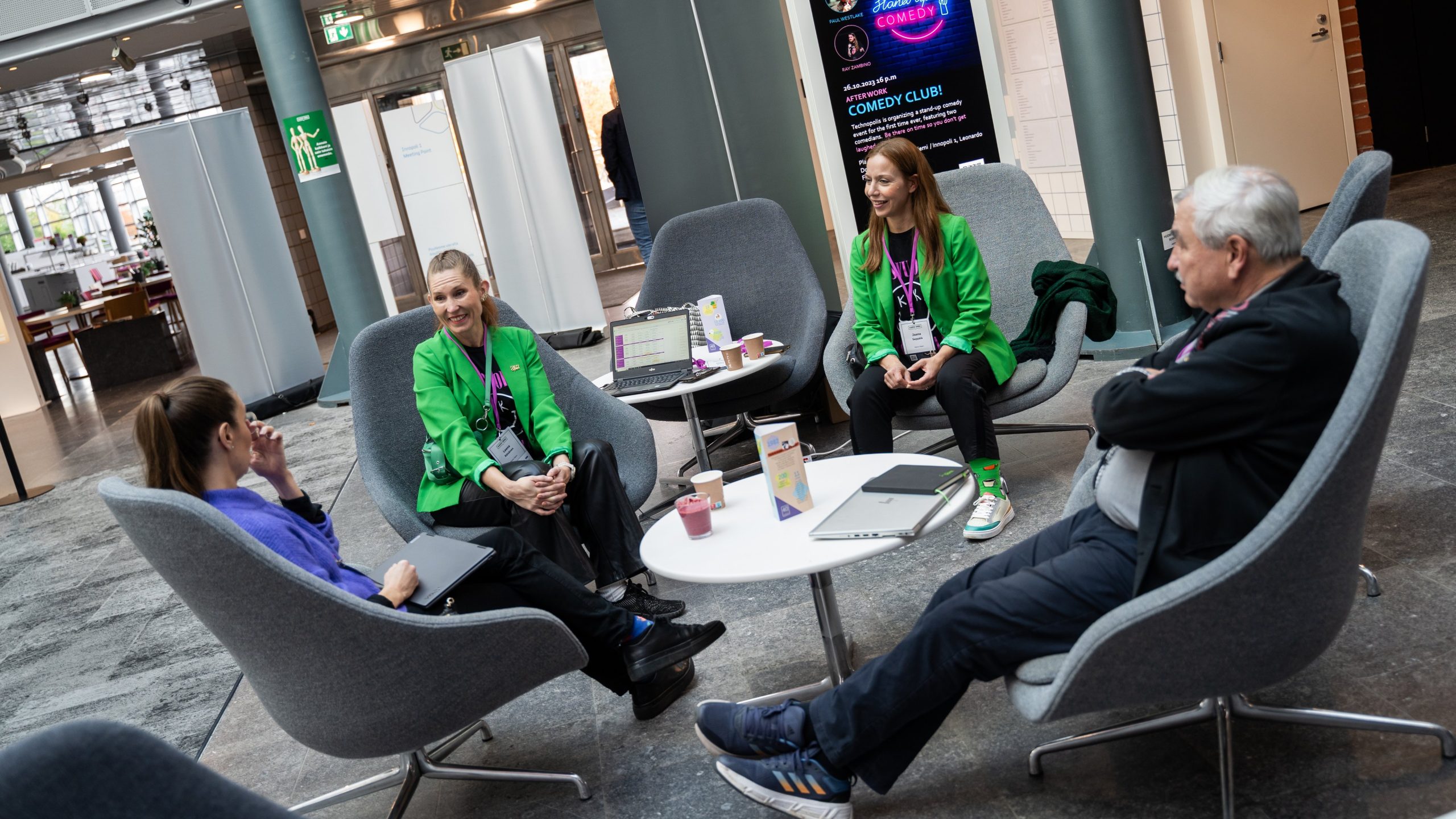Recently, Finnish companies and the finance sector have become increasingly aware of the risks and opportunities associated with biodiversity loss. But what actions can Finnish companies take for biodiversity? And what can we do to turn the situation into an opportunity instead of a risk?
Katriina Anttila, Chief Growth Officer of Good Ventures, believes that Finnish corporations, startups, and the finance sector agree that the circular economy is recognized as a vital strategy for mitigating environmental impacts.
Good Venture is a partner for companies building sustainable growth businesses, bringing insight and hands-on support for executives who innovate with good intentions and move quickly to drive new, sustainable business models.
– When we organized a Slush side event titled ”Building good businesses – and how to take biodiversity into consideration” we delved into the crucial discussion of how to take biodiversity into consideration when building good businesses. All the participants highlighted the interdependence of climate change and biodiversity loss, emphasizing that both must be tackled simultaneously.
”Collaboration emerged as a crucial theme.”
Participants also highlighted the importance of proactive action over waiting for regulatory changes, and the importance of collaborations.
– Collaboration emerged as a crucial theme, with companies like Neste and Valio working with multiple partners to innovate sustainably. Start-ups such as Collective Crunch, Infinited Fiber, and Carbo Culture showcased their initiatives, emphasizing the need for partnership with larger companies to accelerate impact.
Where do we stand?
In the event the findings on how Finnish companies embrace biodiversity were encouraging.
- Companies recognize interdependence of climate and biodiversity:
Finnish companies acknowledge that climate change and biodiversity loss are interconnected issues that must be addressed together. - Companies promote circular economy:
Companies like Valio and Neste emphasize the importance of a circular economy to reduce environmental impact and promote sustainability. - Compabies innovate sustainable solutions:
Valio is developing a sustainable food 2.0 system and introducing plant-based products to complement traditional foods. - Companies make chemical recycling initiatives:
Neste is building a chemical recycling value chain to repurpose plastic waste and reduce pollution. - Companies take proactive action over waiting for regulation:
Companies are taking proactive steps to integrate sustainable practices rather than waiting for regulatory mandates. - Companies collaborate across industries:
Large companies and start-ups are partnering to drive innovation and create sustainable solutions. - Companies support start-ups:
Start-ups are collaborating with larger companies to scale up their impact. - Companies leverage Nordic culture and expertise:
The Nordic focus on trust, collaboration, and technological know-how positions Finland as a leader in sustainable solutions.
Anttila says that in their event the discussions concluded with optimism about Finland and the Nordics leading in sustainable solutions, driven by a culture of trust, collaboration, and a commitment to reducing overconsumption.
Also the event’s keynote speaker Mari Pantsar, one of the most renowned experts in Finland regarding sustainable business practices, highlighted that while some companies view responsibility as a burden, the frontrunners see it as an opportunity.

The forerunners see opportunities – be one and seize them. Now it is the time to develop your business towards the circular economy.
Where to start?
Anttila suggests useful resources for companies planning biodiversity-supportive measures. One to be shared is Sitra’s Playbook for businesses: Sustainable growth with circular economy business models – which is all about how to start your circular economy journey. In Sitra’s words: “practical guide provides insight, examples and hands-on tools to help businesses transition to the circular economy”.
The playbook divides in five practical sections:
- Understand the importance of the circular economy. Find out what global changes are affecting business.
- Unlock the circular opportunities. Find out what opportunities the circular economy offers your company.
- Define your circular business model. Learn how to develop your business towards a circular economy.
- Assess the capabilities needed for circularity. Learn what circular economy transformation takes and identify development targets.
- Create and execute your journey to circular business. Accelerate your circular economy business.
– The forerunners see opportunities – be one and seize them. Now it is the time to develop your business towards the circular economy, Anttila says.
Circular business whitepaper
Circular economy is the best available solution for businesses to combat climate crisis and biodiversity loss. In addition, it is already the greatest business opportunity of our time!
Good Ventures is publishing a practical model and several interesting case examples to help companies identify their circular business opportunities and adopt circular business models step by step to create sustainable growth. Read the whitepaper here (Good Ventures)
Palaa etusivulle


